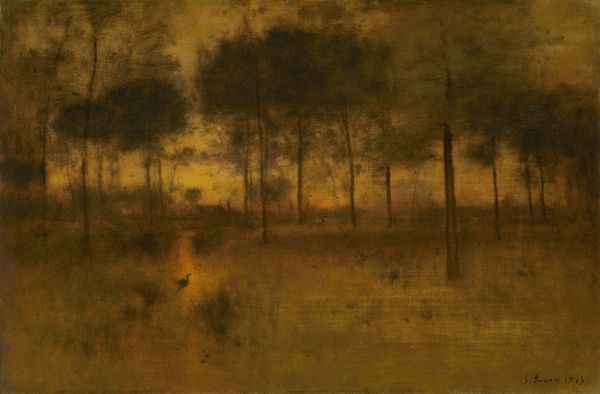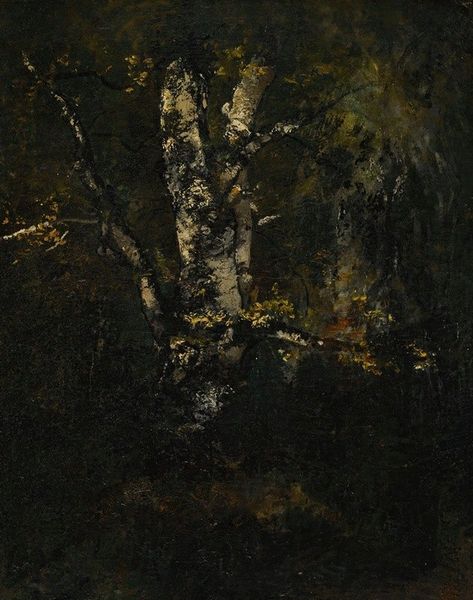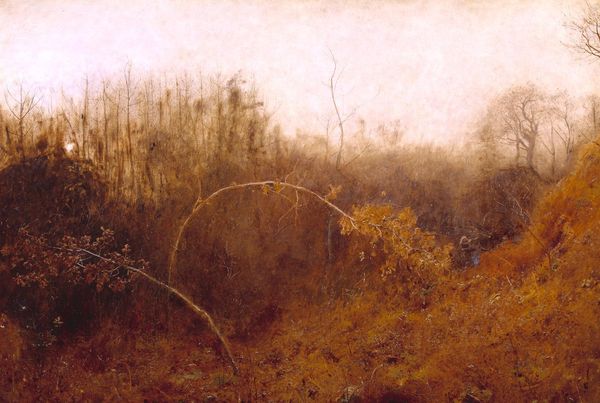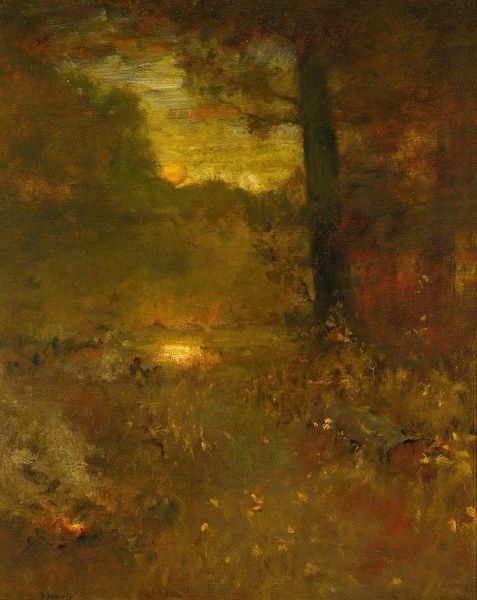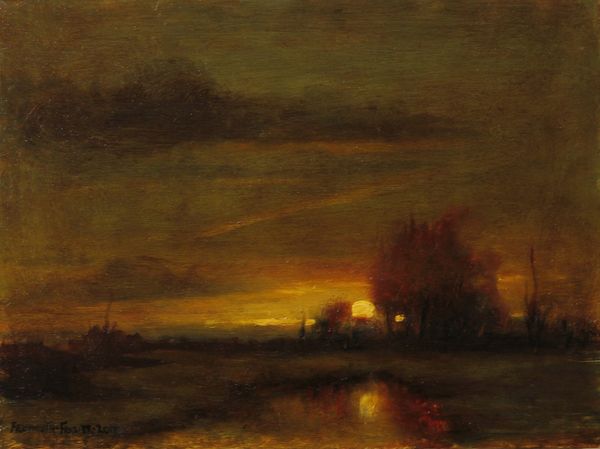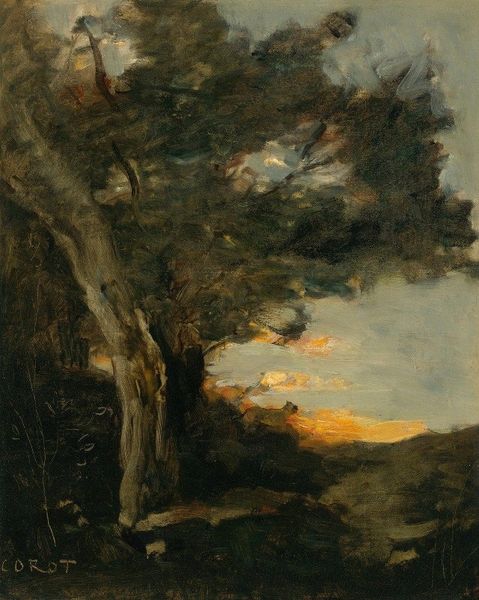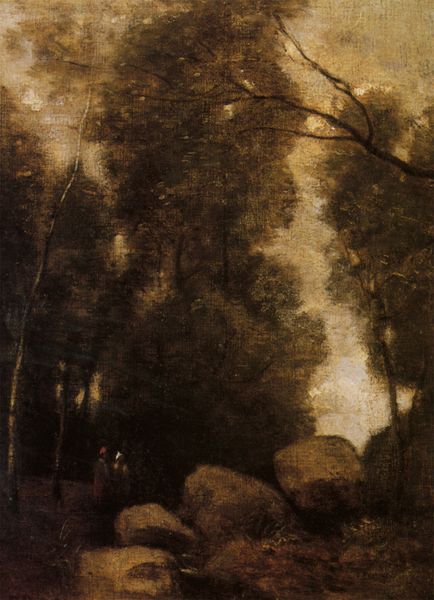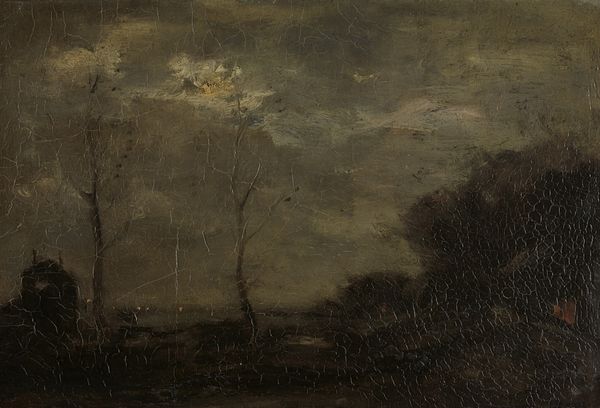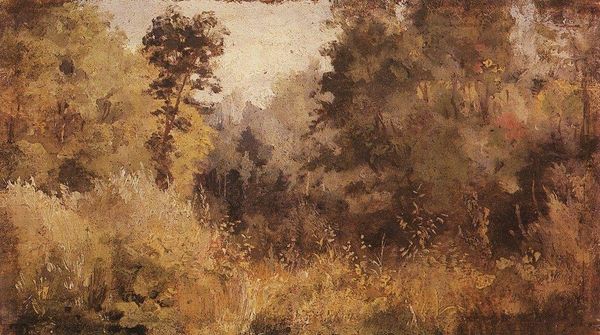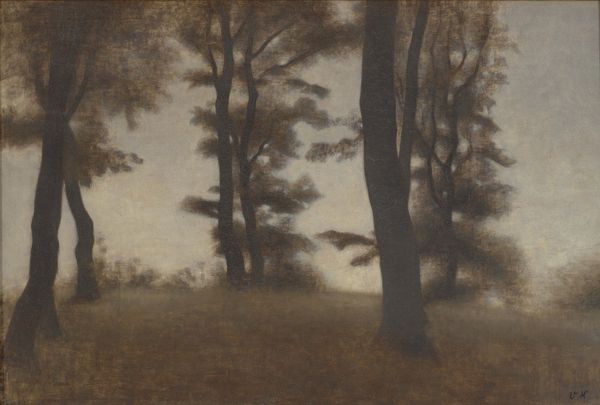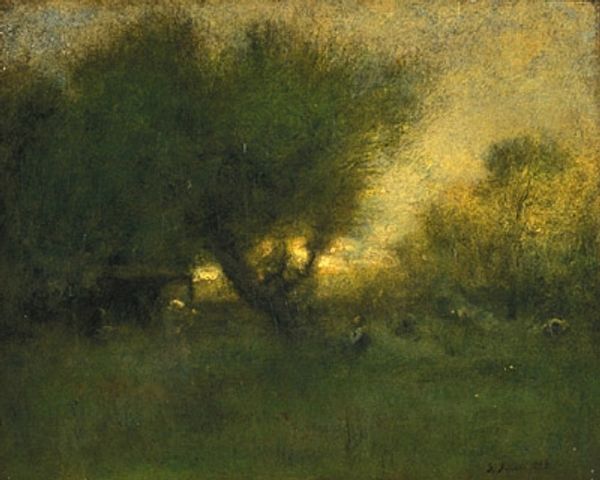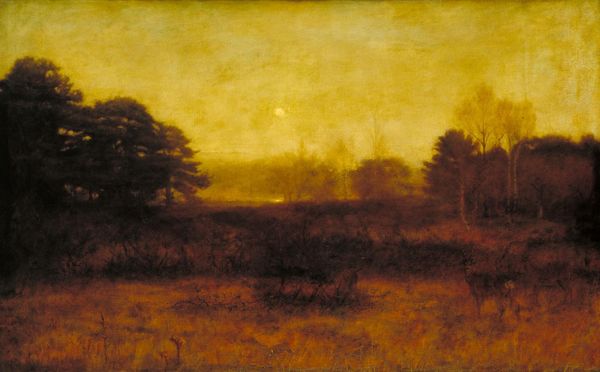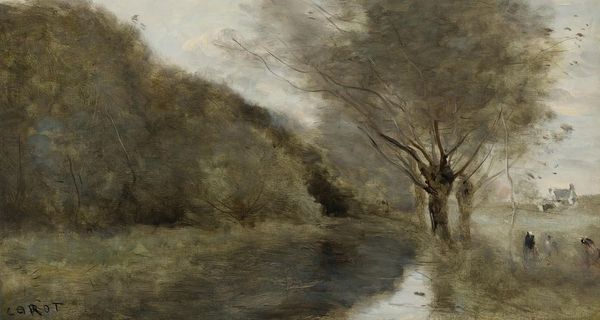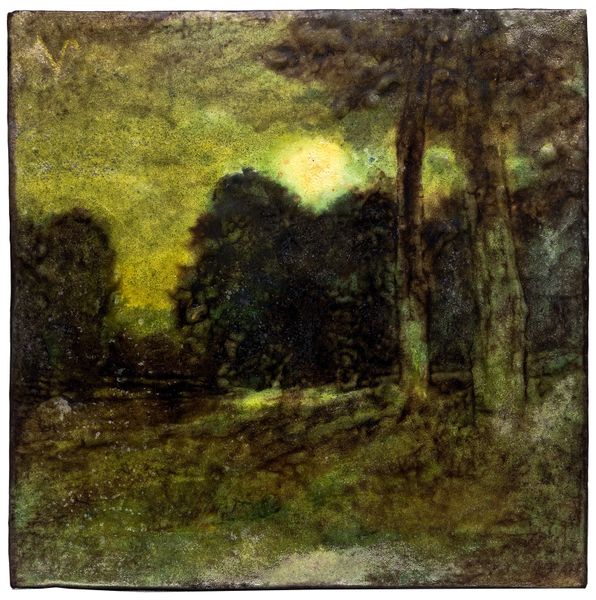
plein-air, oil-paint, impasto
#
plein-air
#
oil-paint
#
landscape
#
oil painting
#
impasto
#
romanticism
Copyright: Public Domain: Artvee
Curator: The mood of this piece, dominated by earth tones, really draws you in, doesn't it? Editor: Indeed. We're looking at Charles François Daubigny's "Woodland Landscape", an oil painting rendered circa 1850. There’s an interesting interplay here between what’s present and what’s suggested. Observe the structure of the leafless tree in the foreground against the atmospheric sky. It presents a poignant symbol, perhaps of mortality or the cycle of seasons. Curator: From a materialist perspective, what intrigues me most is Daubigny’s "en plein air" technique. Working directly from nature like this moves away from the rigid academic styles and allows the changing light and atmosphere to directly influence the materiality of the painting, and its impact as labor made visible. I notice a distinctive impasto layering of paint. How does that physical application of the medium itself influence our perception? Editor: Absolutely, the textural richness emphasizes the artwork’s physical presence. Also, this choice, I think, brings together an intentional contrast; it accentuates the tangible reality of the natural scene while also preserving a slightly muted palette to help further deepen its overall sense of introspection and reverie. Curator: Do you see a relationship between Daubigny embracing landscape, and broader societal shifts in France at that time? A romantic era perhaps where people had growing concerns over labor and urban life, who yearned for the simpler purity they associated with pastoral scenes? Editor: Interesting. As a formalist, the tree, rising diagonally against a soft backdrop, is an integral visual decision that drives us to see depth; the atmospheric perspective generated offers depth and unity overall. Its linear form creates a powerful counterpoint to the vaguer forms behind it. Curator: Yes, and how do we read Daubigny’s placement? He invites consideration on themes such as human intervention against nature. This piece asks, "What labor, toil and impact helped create this ‘natural’ scene?". It underscores my point of his romantic idealism for what may not even exist. Editor: We are presented with interesting visual concepts; whether his intentions leaned into society and the physical processes we leave behind as humans on nature remains an element to which interpretation invites discourse. Curator: By interrogating this notion of natural beauty through his work, Daubigny prompts viewers to be ever more aware. Editor: A fine landscape that presents depth to discuss through a number of concepts and through how one may interpret it.
Comments
No comments
Be the first to comment and join the conversation on the ultimate creative platform.
